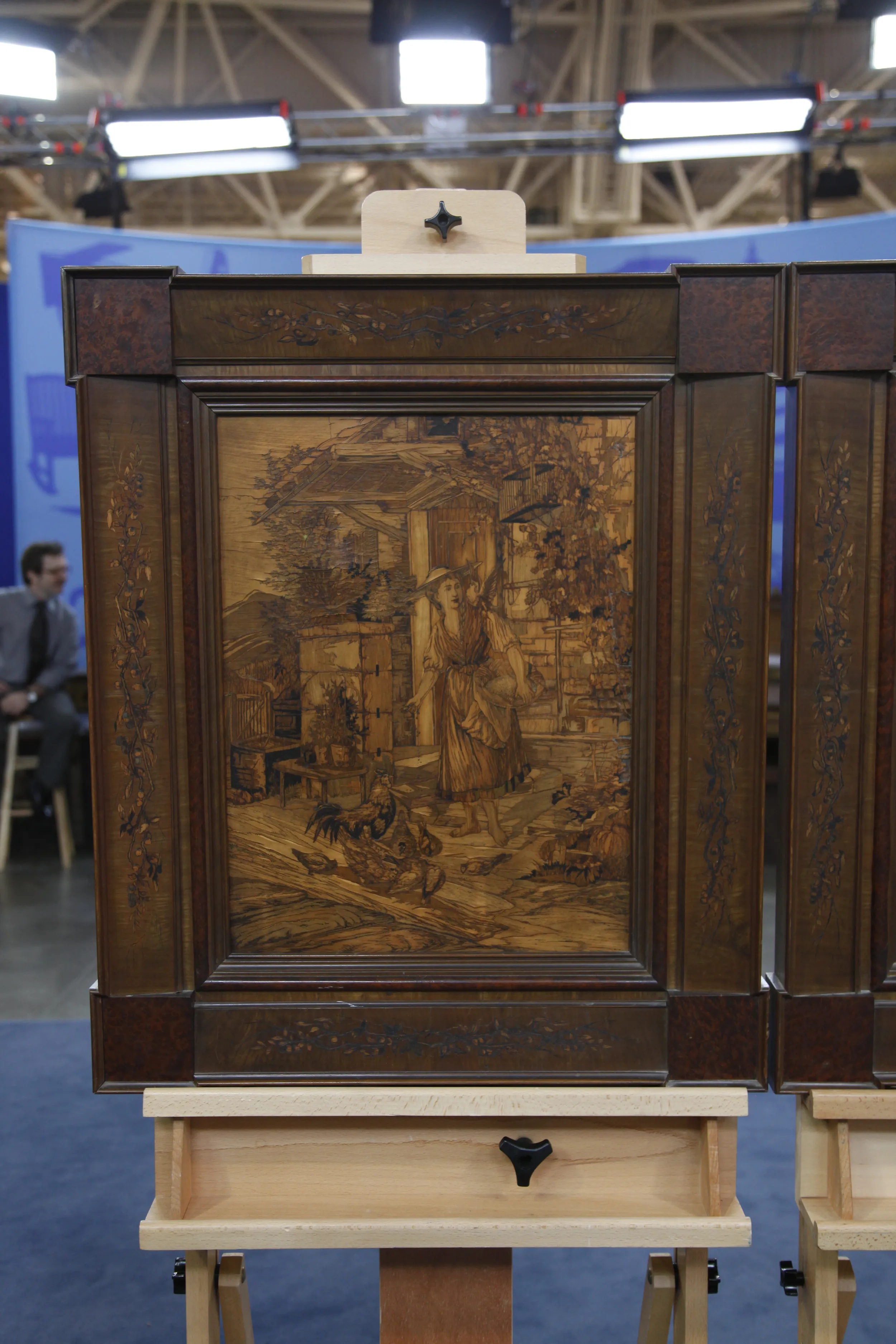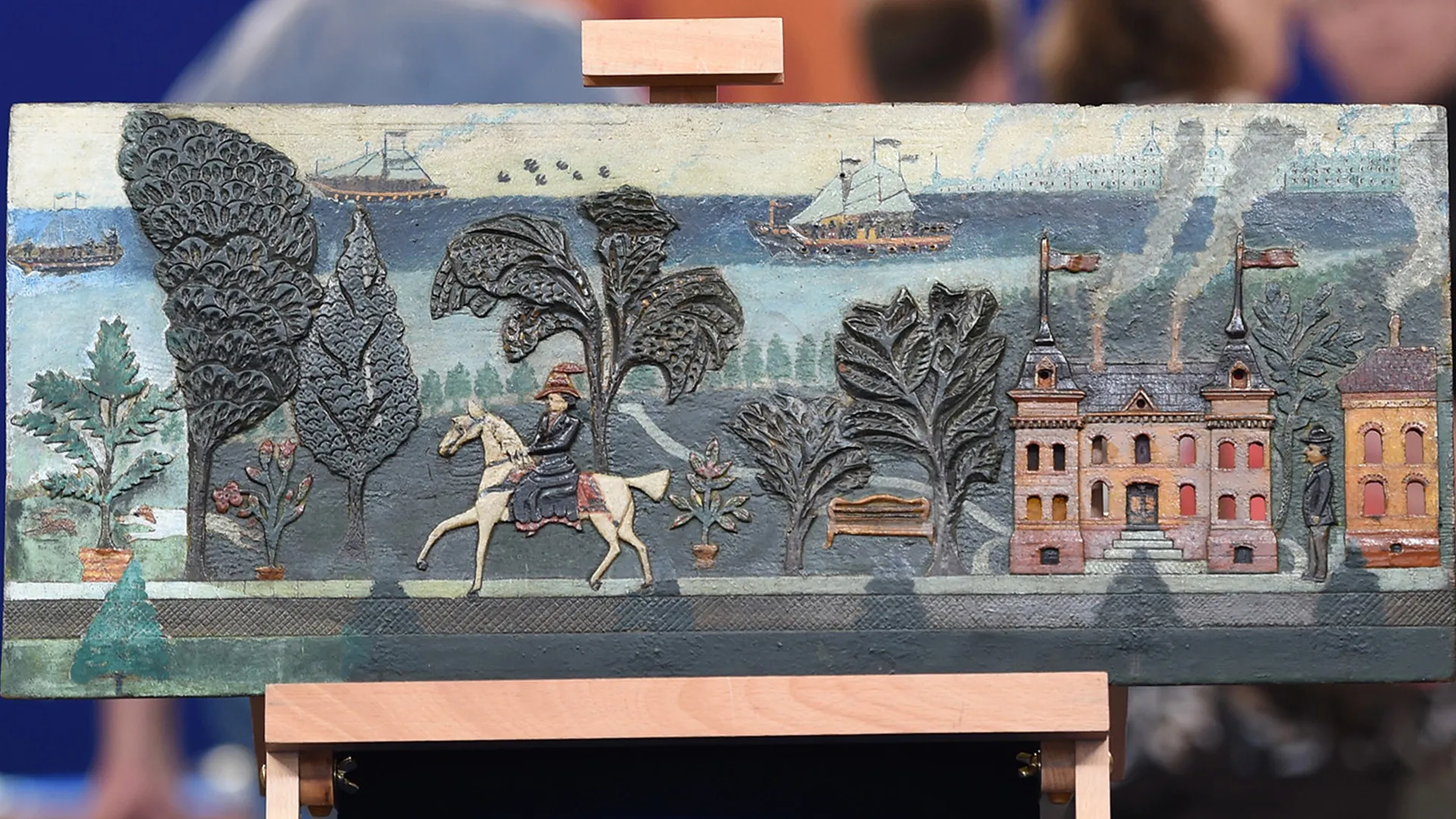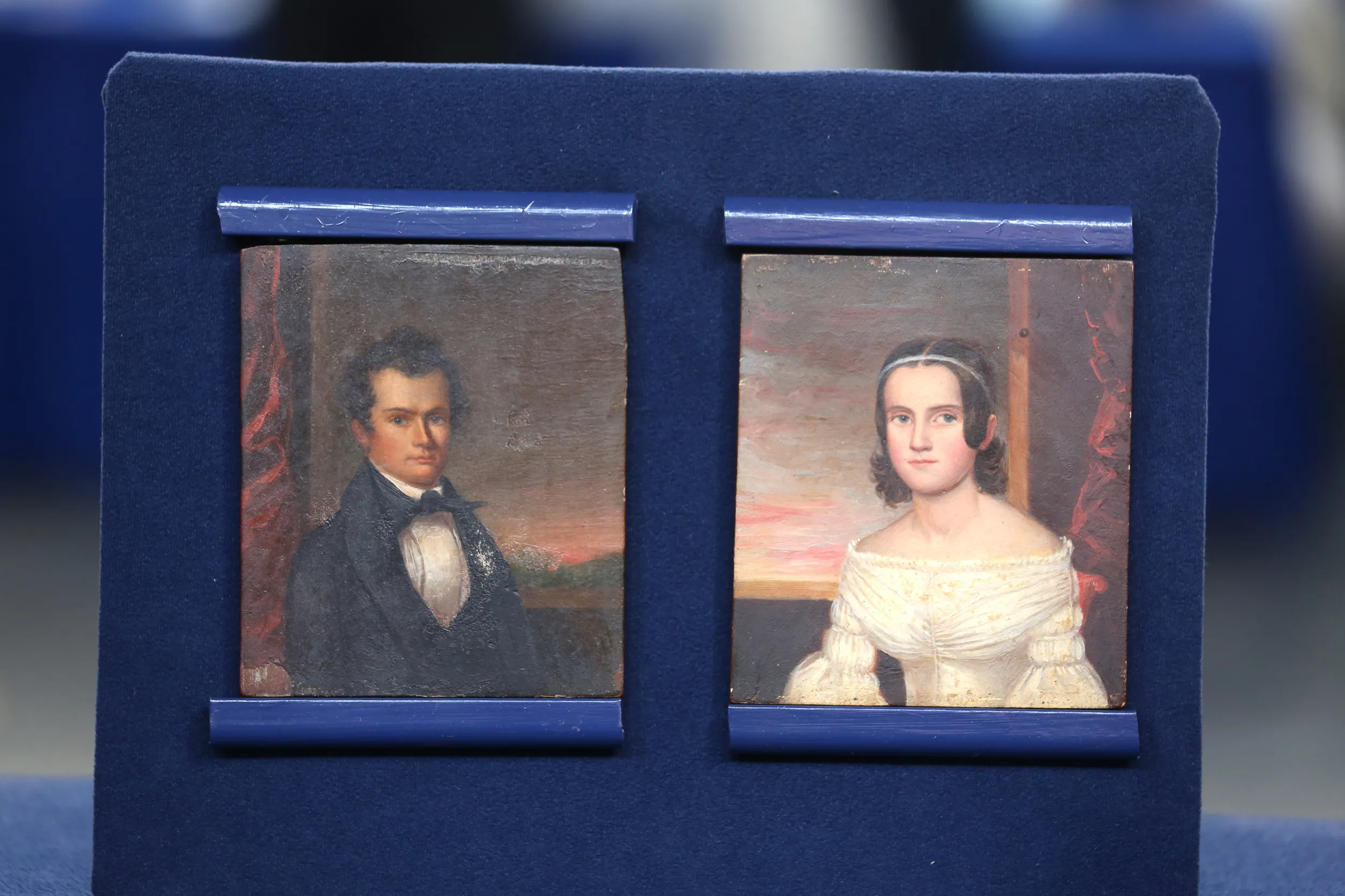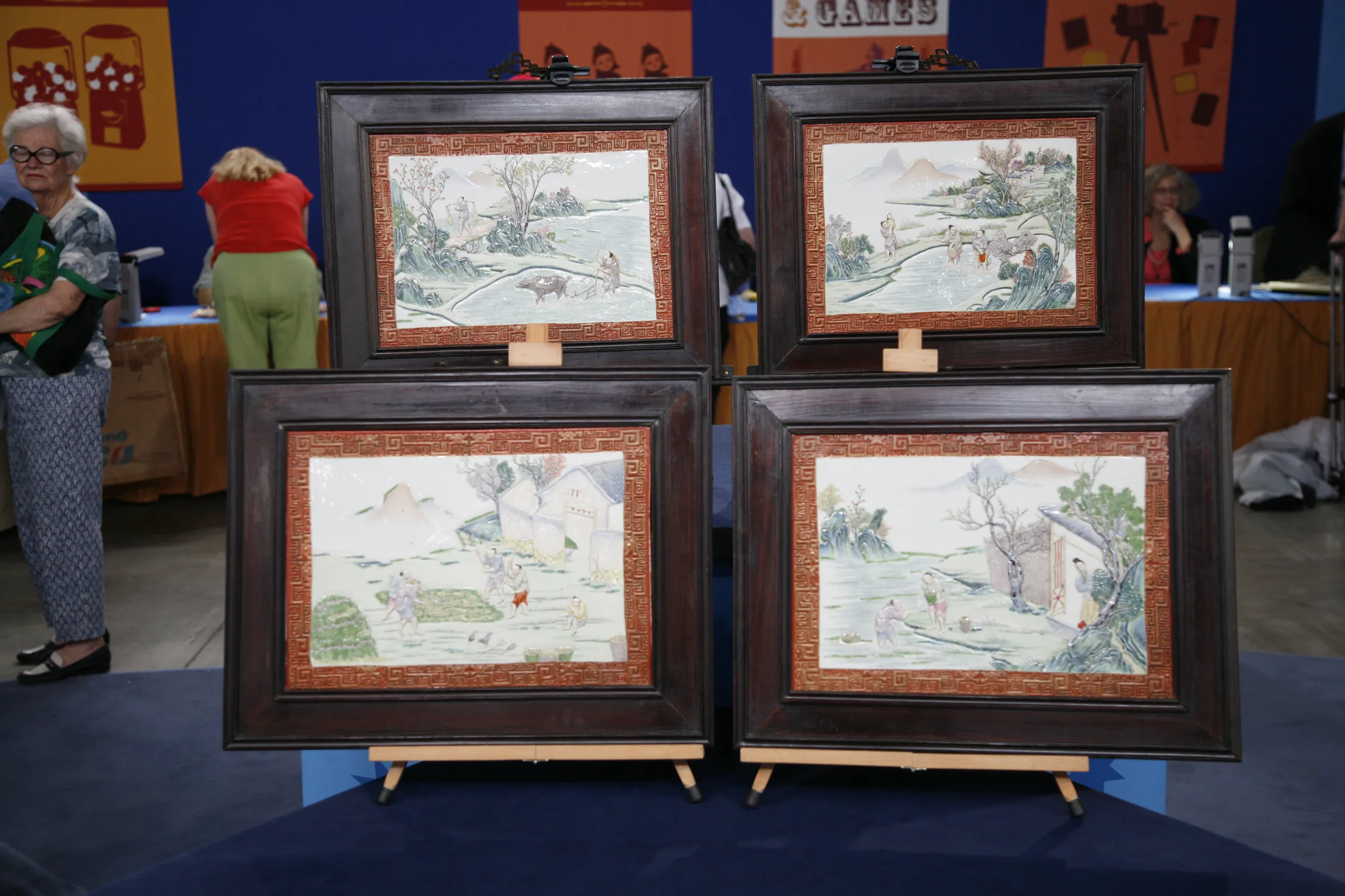GUEST: My grandmother gave these to me about 15 years ago, and she said that they came from either her parents or my grandfather's parents. And she believes they got them during some of their travels to Europe. My grandmother was 100 when she died a couple of years ago, and I'm assuming that my great-grandparents probably traveled in Europe in the 1800s, but I don't know.
APPRAISER: That would make sense. They would have been fairly expensive then to buy as a sort of souvenir...
GUEST: Okay.
APPRAISER: ...but the kind of thing you could really only find in Europe then. The technique we call intarsia. And intarsia is a word really meaning "inserting." And what's happened here is that a craftsman has taken very small pieces of wood and inlaid them into a ground of wood.
GUEST: Okay.
APPRAISER: Now, there is a difference between this technique and a more familiar technique that we call marquetry, or marquetry veneer. Marquetry is a slightly more sophisticated technique where instead of inlaying the little bits of wood into the ground, you actually make a kind of jigsaw puzzle, a sheet, of veneer, or different materials, and then you stick that onto a frame.
GUEST: Okay.
APPRAISER: And that doesn't really start until the 17th century, and we don't see it in earnest until the 18th century.
GUEST: Okay.
APPRAISER: And intarsia is actually the much older technique. There was forms of it in the ancient world, but essentially, in this kind of form, it starts in the early Middle Ages, Southern Europe, Italy, and kind of migrates northward. The Germans got very good at it as early as the 15th and 16th centuries.
GUEST: Okay.
APPRAISER: Although these were not made that early. They were probably made, I suspect, in the 1890s.
GUEST: Okay.
APPRAISER: Possibly the 1880s. So it's possible that they were new when your ancestors were traveling. To me, the scenes-- and they are, by the way, a definite pair-- reflect a very provincial Alpine way of life in Europe: this chalet, this kind of costume. There's some great features on this particular one. The woman herself is beautifully conceived.
GUEST: Mm-hmm.
APPRAISER: I like this little feature, which was common throughout the 19th century and into the early 20th century...
GUEST: Okay.
APPRAISER: ...in rustic homes like this. It's a linnet cage.
GUEST: What is a linnet?
APPRAISER: A linnet is a kind of songbird.
GUEST: Okay.
APPRAISER: It could be kept as a pet, essentially. It's just to entertain you by singing.
GUEST: Oh, okay.
APPRAISER: They sing beautifully in the morning.
GUEST: Okay.
APPRAISER: But everything's designed to look appealing from a kind of bucolic, ideal, rustic point of view. And they are in very good condition.
GUEST: Okay.
APPRAISER: To find another pair of this scale and age would be quite difficult.
GUEST: Okay.
APPRAISER: I think if they came up at auction today, the low estimate would certainly be $3,000.
GUEST: Okay.
APPRAISER: And the high estimate perhaps $5,000.
GUEST: Okay.












